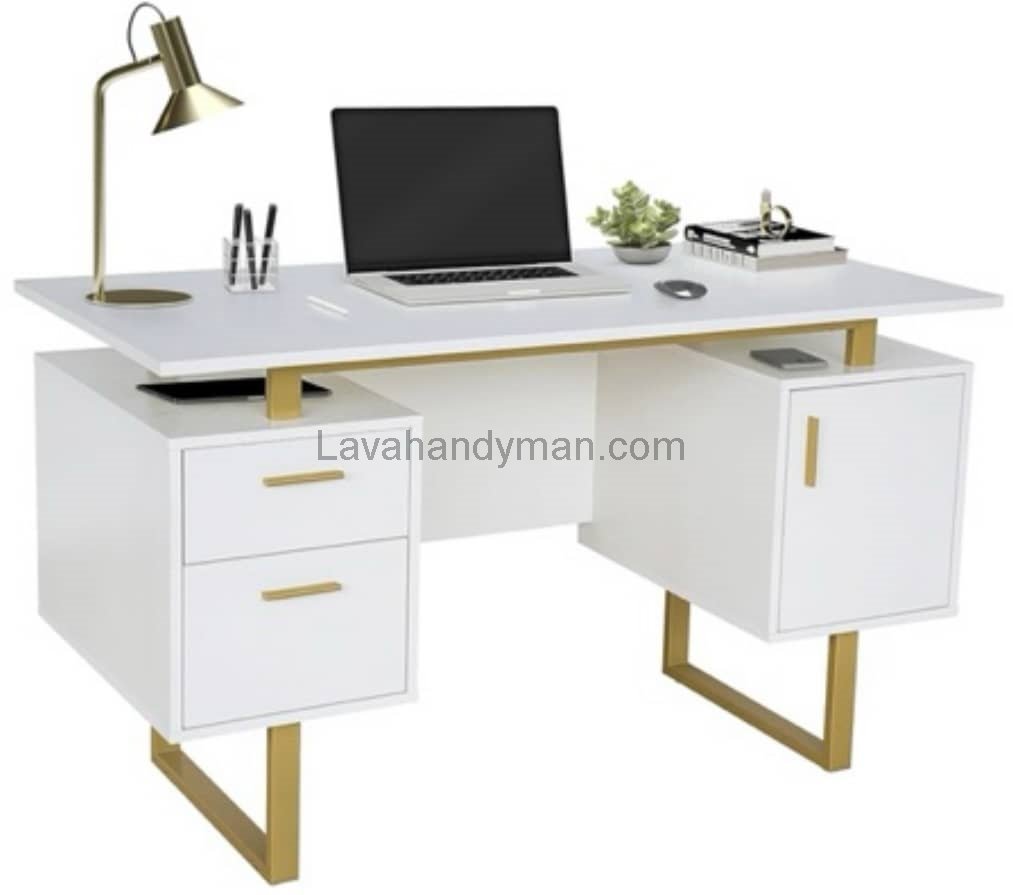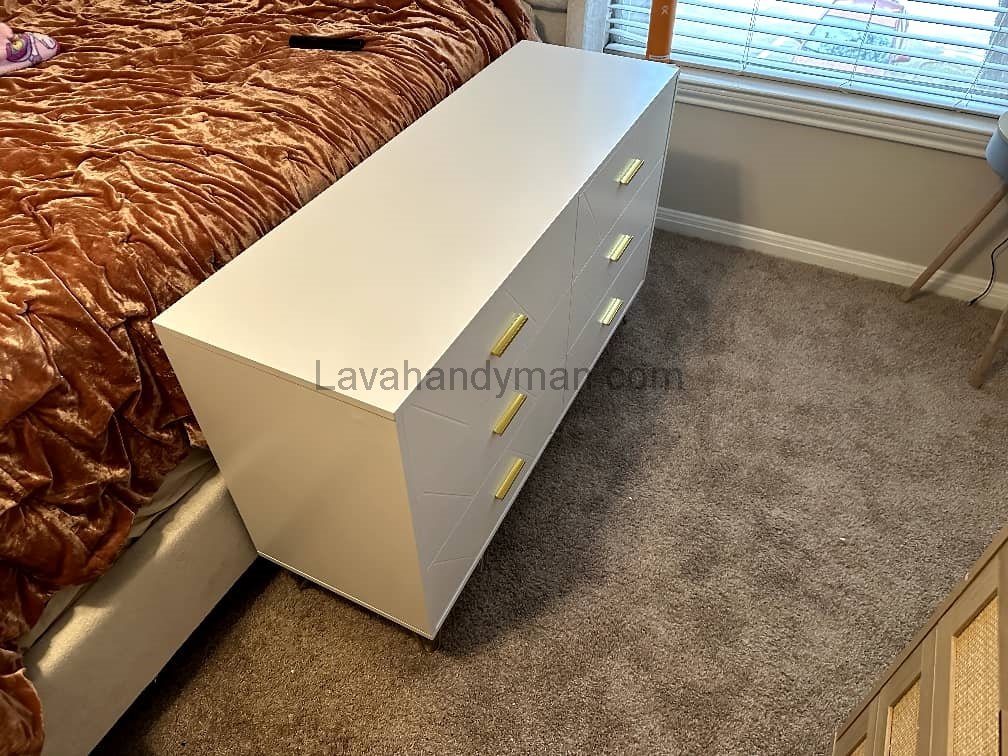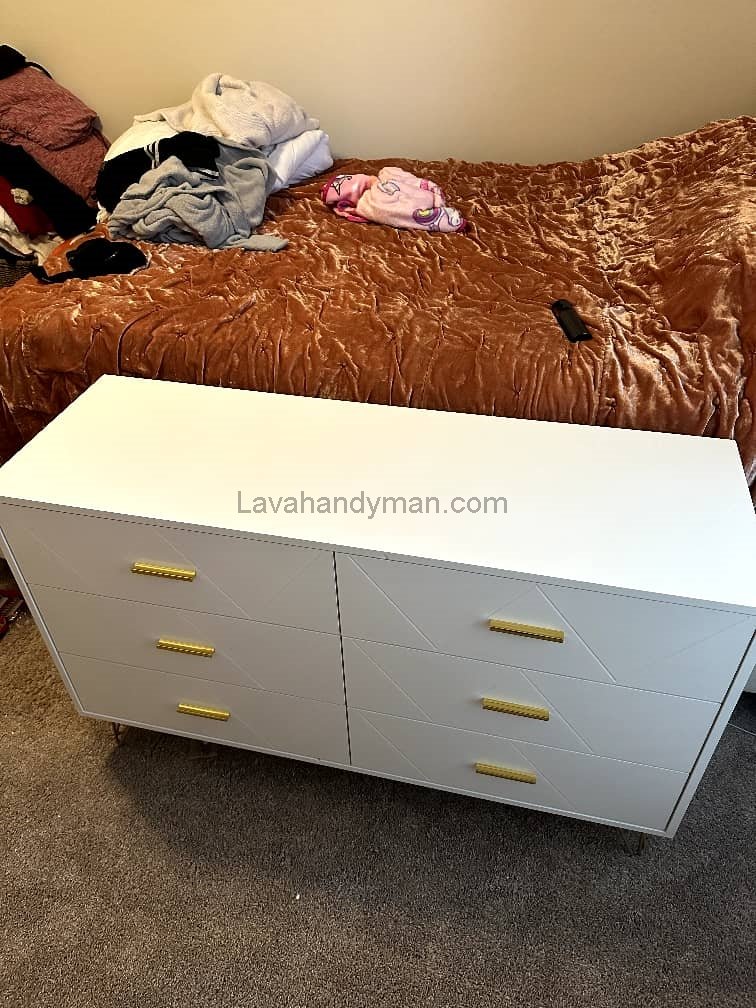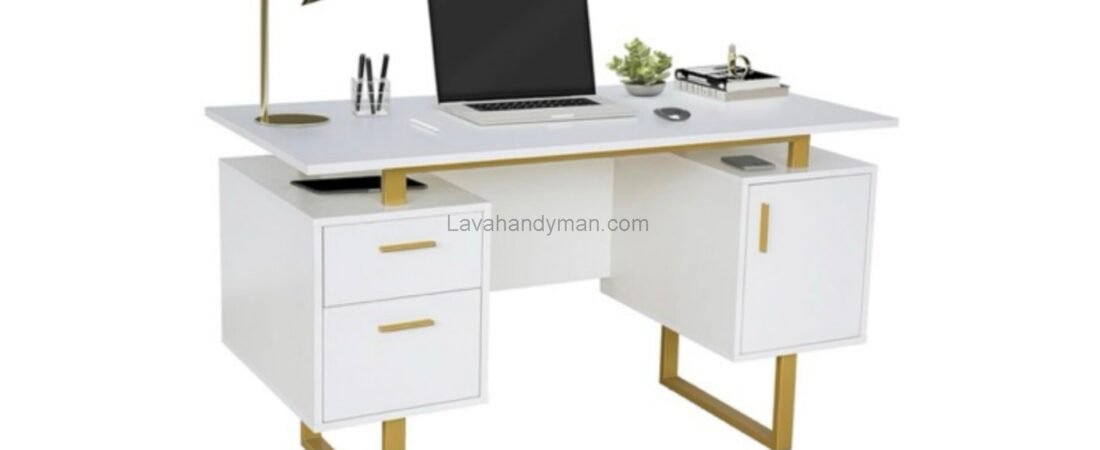A Complete Guide to Assembling Desks and Furniture
Introduction
With the rise of modern design in the furniture industry, many manufacturers now offer their products in flat-packed form, allowing customers to transport and assemble them easily on-site. This approach is especially popular for desks, chairs, cabinets, and various home or office items.
Although assembling furniture may seem challenging at first, with the right tools, a suitable workspace, and some patience, it’s a task anyone can handle. In this guide, you’ll learn everything about furniture assembly—starting with preparation, through step-by-step instructions, safety tips, common issues, and how to fix them.
1. Essential Tools for Assembly
Before starting, make sure you have the following tools on hand:

Basic Tools:
- Flat-head and Phillips screwdrivers
- Allen wrench (usually included in the package)
- Rubber or wooden mallet
- Electric drill (if necessary)
- Spirit level
- Measuring tape or ruler
A Complete Guide to Assembling Desks and Furniture
Additional Items:
- Wood glue (for stronger joints)
- Work gloves
- Small containers for organizing screws and fittings
- Assembly instruction manual
2. Preparing a Proper Workspace
A clean and organized workspace plays a key role in making the assembly process smoother and faster.
Recommendations:
- Work on a flat, clean, dry surface.
- Use a soft mat or cloth to avoid scratching the furniture.
- Ensure good lighting so you can see markings and holes clearly.
- If possible, assemble the item in the room where it will eventually be placed.
A Complete Guide to Assembling Desks and Furniture
3. Sorting and Identifying Parts
This is a crucial step to prevent confusion during assembly.
Suggested steps:
- Unpack all parts and lay them out on the floor.
- Identify wooden or metal parts according to the labels or diagrams in the manual.
- Sort screws and fasteners into small containers.
- If there’s no manual, inspect the design and pre-drilled holes to deduce the logical assembly order.
A Complete Guide to Assembling Desks and Furniture
4. Step-by-Step Desk Assembly
Here’s how to assemble a standard desk. Details may vary depending on the model.
1. Attaching the Legs:
- Begin by connecting the legs to the top panel.
- Use a level to ensure all legs are perfectly vertical.
- Don’t overtighten screws at this stage to allow for adjustments later.
A Complete Guide to Assembling Desks and Furniture
2. Installing Side Panels:
- Connect the side and back panels to the tabletop using screws or fittings.
- Make sure everything is aligned properly.
3. Assembling Drawers (if applicable):
- Use wood glue and screws to build the drawer frame.
- Slide the bottom panel into place.
- Attach drawer rails and install the drawer into the desk.
- Fix the handles onto the front panel.
4. Final Tightening and Placement:
- Once all parts are in place, tighten all screws securely.
- Flip the desk upright and check for stability.
A Complete Guide to Assembling Desks and Furniture
5. Assembling Other Furniture Types
The general principles remain the same, but some furniture requires extra attention:
Cabinets and Bookcases:
- Start with side, top, and bottom panels.
- Use screws, cams, or dowels to fasten corners.
- Install doors using adjustable hinges.
- Check alignment with a level.
Chairs and Sofas:
- Attach legs to the seat base.
- Add armrests and backrests.
- Use a staple gun to secure fabric (if upholstered).
A Complete Guide to Assembling Desks and Furniture

6. Safety Tips During Assembly
To prevent injury or damage:
- Always wear gloves.
- Use a mallet gently to avoid cracking the material.
- Keep children and pets away from the workspace.
- Read and follow instructions for power tools.
- Don’t lift heavy parts alone—ask for help.
7. Common Assembly Mistakes and Solutions
A. Incorrect Part Installation:
- Loosen the screws, remove the wrong part, and replace it with the correct one.
- Double-check the manual before installing each piece.
B. Misaligned Holes:
A Complete Guide to Assembling Desks and Furniture
- Verify the part orientation.
- If a wrong piece is used, the holes may not match.
C. Missing Screws or Parts:
- Recheck the packaging—some parts may be hidden in small bags.
- If something is truly missing, contact the manufacturer or replace it at a hardware store.
A Complete Guide to Assembling Desks and Furniture
8. Benefits of DIY Furniture Assembly
While hiring a professional may be easier, assembling furniture yourself has several advantages:
- Saves money
- Builds useful DIY skills
- Gives you a deeper understanding of the structure
- Allows for minor customization (e.g., swapping handles, adding wheels)
- Offers a sense of accomplishment
9. Caring for Your Furniture After Assembly
To extend the lifespan of your furniture:
- Avoid direct contact with water or harsh chemicals.
- Keep furniture away from direct sunlight.
- Check screws and joints every few months and retighten if necessary.
- Use wood polish or repair markers for scratches or wear.
A Complete Guide to Assembling Desks and Furniture
🧰 Tools Commonly Used for Desk Assembly
1. Screwdrivers (Flathead and Phillips)
- Used for tightening various types of screws.
- Most desks use Phillips-head screws.
2. Allen Wrench (Hex Key)
- Many modern desks use Allen screws.
- Often included in the product package.
3. Rubber or Wooden Mallet
- Helps tap parts into place without damaging the wood surface.
- Avoid using a metal hammer unless protected with a cloth.
4. Electric Drill (Optional)
- Useful if pre-drilled holes are missing or if extra strength is needed.
- Should be used carefully with low speed and precision.
A Complete Guide to Assembling Desks and Furniture
5. Measuring Tape or Ruler
- Ensures accurate placement of legs, shelves, or drawers.
6. Spirit Level
- Helps check that the desk surface is level and properly balanced.
- Prevents wobbling or uneven legs.
7. Wood Glue (Optional)
- For more permanent joints, especially in drawers or dowel-based connections.
8. Work Gloves
- Protects hands from splinters, sharp edges, or tool-related injuries.
🧩 Other Useful Accessories
Leg protectors or adhesive pads (to prevent floor scratches)
Screws and bolts
Plastic or metal dowels (used in some models)
Drawer rails (for desks with drawers)
A Complete Guide to Assembling Desks and Furniture
🧰 Comparison of Common Tools Used in Desk Assembly
| Tool | Function | Advantages | Disadvantages | Usage Necessity |
|---|---|---|---|---|
| Screwdriver (Flathead & Phillips) | Tightening and loosening screws | Widely available, inexpensive, easy to use | Requires manual effort, slower than a drill | Essential for all assemblies |
| Allen Wrench (Hex Key) | Tightening Allen (hex) screws | Lightweight, often included in packaging, ideal for specific joints | Can be hard to grip or turn for long periods | Usually essential depending on the desk model |
| Rubber or Wooden Mallet | Gently tapping parts into place (dowel or pressure-fit joints) | Non-damaging, effective for snug fittings | Incorrect use can still cause cracks | Semi-essential for certain joints |
| Electric Drill | Fastening screws or drilling pilot holes | Quick, powerful, time-saving | Harder to control for beginners, risk of overdriving | Optional but helpful |
| Measuring Tape or Ruler | Measuring leg or drawer spacing | Increases precision and balance | Depends on user accuracy | Recommended for better accuracy |
| Spirit Level | Ensuring the desk is level and balanced | Prevents wobbling or tilted surfaces | May be tricky in tight spaces | Recommended for stability |
| Wood Glue | Permanent bonding of wooden joints | Strong hold, clean look, no screws needed | Not reversible, requires drying time | Optional for added strength |
| Work Gloves | Hand protection during assembly | Prevents cuts, splinters, chemical exposure | May reduce fingertip precision | Recommended for safety |
A Complete Guide to Assembling Desks and Furniture
✅ Summary and Recommendations
For desks with drawers, hinges, or intricate parts, additional accessories may be more important.
For simple desks with standard hardware, a screwdriver, Allen key, and soft mallet are usually sufficient.
For greater precision or more complex models, consider adding a measuring tape, level, and drill.
A Complete Guide to Assembling Desks and Furniture
Conclusion
Assembling a desk or other pieces of furniture might seem daunting at first, but with a bit of patience and the right approach, it can become an enjoyable and satisfying experience. Beyond saving on installation costs, it empowers you with practical knowledge and a sense of pride in your own work.
Next time you buy a flat-pack piece of furniture, consider assembling it yourself. Take your time, follow the steps, and enjoy the process—you might surprise yourself with how capable you are.
📞 Need Help?
Let us take care of the hard work while you sit back and relax.
📍 Serving: Austin, Round Rock, Cedar Park & more
📱 Call or Text: (737) 420-6992
🌐 Visit: https://lavahandyman.com


